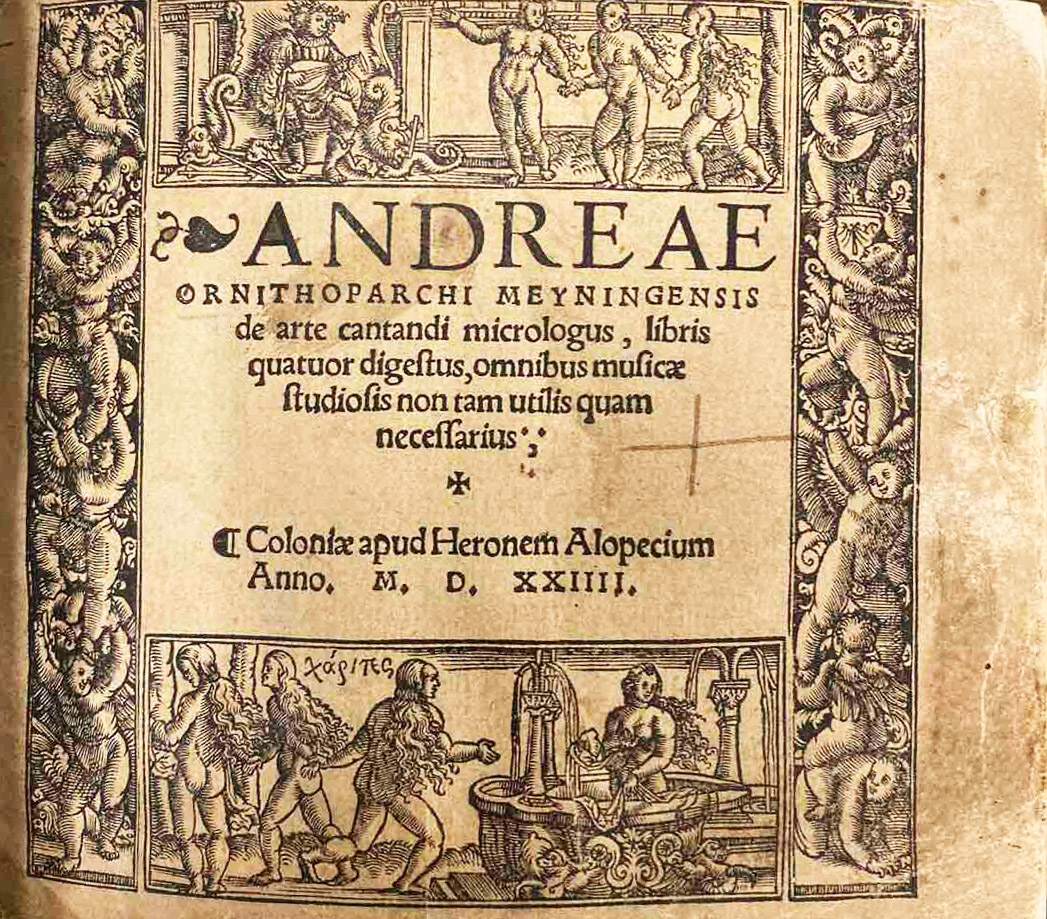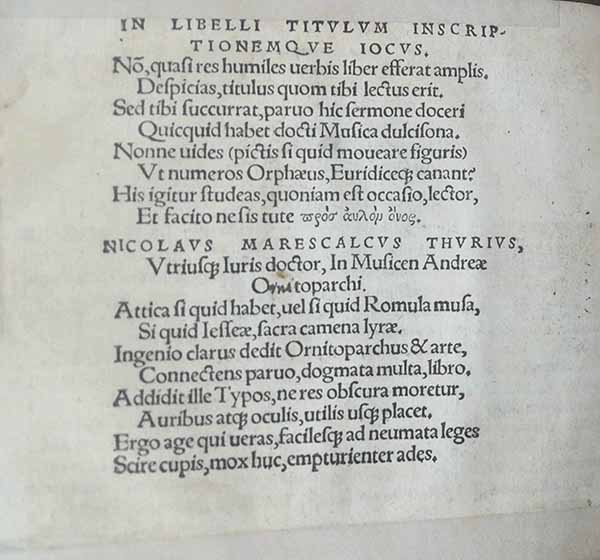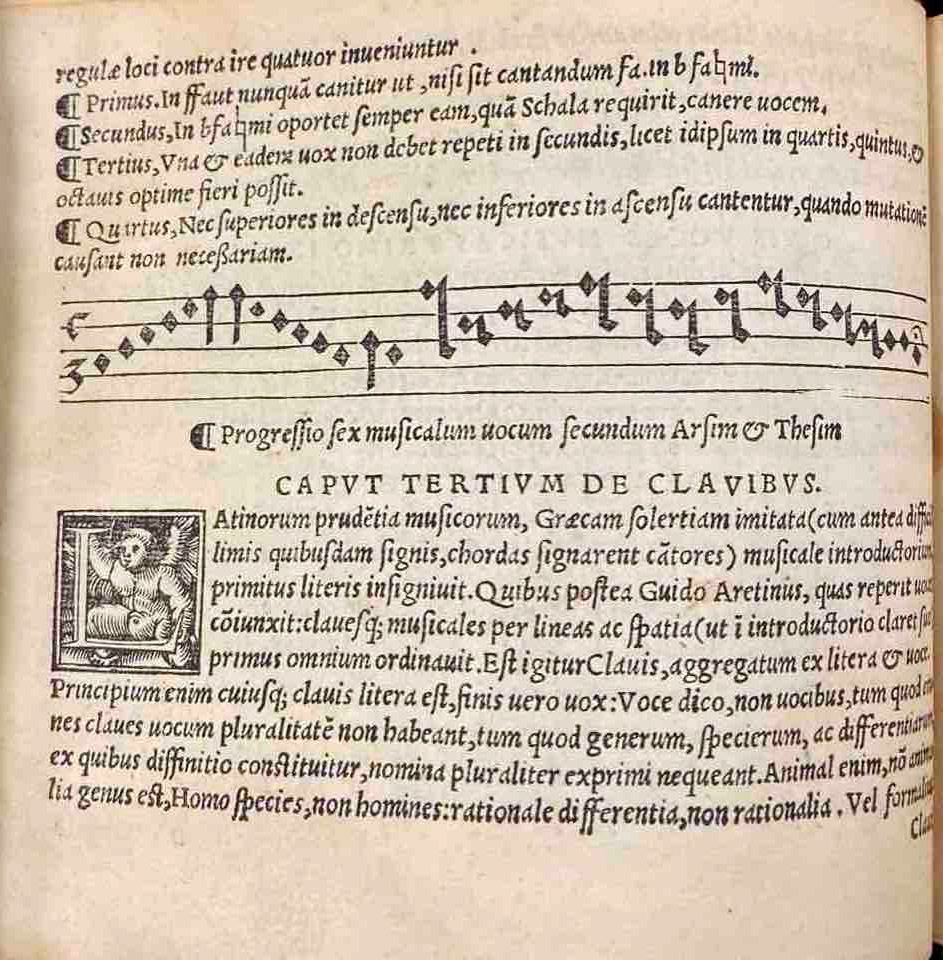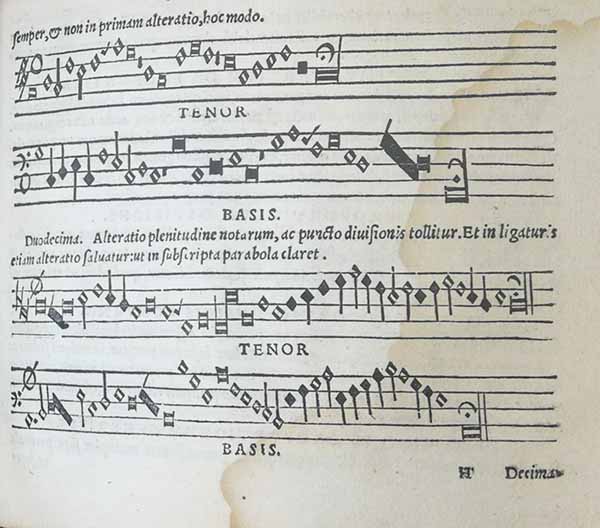Cologne: Hero Fuchs, 1524, vdm: 528
❧ ANDREAE || ORNITHOPARCHI MEYNINGENSIS || de arte cantandi micrologus , libris || quatuor digestus,omnibus musicæ || studiosis non tam utilis quam || necessarius ∙,∙ || ✠ || ¶ Coloniæ apud Heronem Alopecium || Anno. M. D. XXIIII.||
Cologne
Theory book
Further editions of the music theory after 1550: Leipzig 1555, London 1609.
A1v: two little poems
Richly decorated title page with a frame composed of four woodcuts. To the left and right, the vertical borders display putti playing instruments. In the upper register are the three Graces dancing to music provided by Apollo, playing a lute on a throne. In the lower register the Graces stand by a fountain in which a fourth woman (a Muse?) bathes.
Latin; Greek
US-CAh GEN Mus 285.17.4*


woodcut
Italic, Antiqua (Roman), Greek
Text is also printed from woodcut.
Hufnagel notation; Mensural notation
Hufnagel on four or five staff lines. White mensural notation on five staff lines. Some examples in mensural notation use coloration throughout (i1r). There is a sort of score for two voices on a ten-line staff; coloration distinguishes between the two voices (L2r).
example in theory book
I-Sc, *US-CAh
The book is also listed in the 1548 Bibliography by Gesner (see Bernstein).
Leipzig: Valentin Schumann, 1517, vdm: 506 Leipzig: Valentin Schumann, 1519, vdm: 505 Cologne: Johannes Gymnich the Elder, 1533, vdm: 503 Cologne: Johannes Gymnich the Elder, 1535, vdm: 504
Bernstein, Lawrence F. “The Bibliography of Music in Conrad Gesner's Pandectae (1548).” Acta Musicologica 45 (1973): 119-163 (no. 62)


The catalogue of the library gives a second shelfmark (GEN (Cl 1013)) for the same book.
Greek letters on the title page. A1v: handwritten correction to “Ornitoparchi”.
Harvard purchased the copy in 1927 from “Nijhoff” with money from the Elkan Naumburg Fellowship Fund.